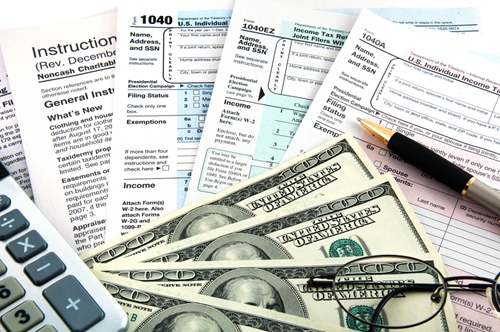How To Prepare For Tax Season
According to a report from the U.S. Government Accountability Office and the General Accounting Office, the vast majority of American taxpayers pay more than they need to in taxes. About an extra $1 billion in revenue is generated every year from these errors, that amount to several hundred dollars per person. To prevent this from happening, you need to make sure you stay organized not only when filing your taxes for the April 15 deadline, but throughout the year as you collect invoices, statements and receipts. While it seems like a daunting task, it’s actually remarkably easy to organize what you need to do your taxes accurately and on time.
Three folder system
Many utilize what Motley Fool writer Dayana Yochim termed the “pile it and file it“1 technique of tax prep. This technique involves putting all relevant forms for tax filing into one place – a dark, unused desk drawer perhaps – and letting them sit until tax time. Maybe you’ve already done this for a year and are dreading the work of sorting through the mess.
Luckily, Yochim informed Motley Fool readers of another, more efficient method for tax prep that works for procrastinators and productivity gurus alike. While some people may have more complicated tax scenarios, this three folder system works well as a basic organizational tool to keep you from overpaying on your final tax bill.
As the name suggests, the three folder system utilizes three folders to organize tax documents. The first folder is for income; income is any money earned throughout the year from jobs, investments or even interest from savings accounts as income. Make a list of all your income sources and keep it in this folder. Once tax season arrives, you should start receiving W-2 and 1099 forms in the mail from all of your income sources. Once you receive these, verify their accuracy and check them off your income source list.
The second folder is for deductions. This will probably make you happier than the first folder because it’s the one where you tally up how much tax you won’t pay. Just like your income sources, keep track off all your applicable deductions throughout the year. If you are a salaried worker, part of this is already being done for you thanks to your W-2. If you are a contract or freelance worker, donate to charities frequently or do any other kind of tax-exempt activity, this folder is important. According to TurboTax, there are numerous tax exemptions2 available to people that get overlooked regularly. These include student loan interest paid off by parents, moving expenses to start your first job (if you moved more than 50 miles), or a refinanced mortgage.
The third and final folder is for any investments you may have made throughout the year. This includes any monthly, quarterly or annual statements, as well as purchase receipts, sale confirmations and dividend notices. If you have several types of investments subject to tax, Motley Fool recommends creating separate folders for different categories. Make one folder for deductible or tax-deferred investments, which include Roth 401(k) accounts or IRAs. Nondeductible investments apply to these accounts if they are not Roth-type. Another folder will be for taxable investments like stocks and bonds.
More ways to save on taxes
U.S. News and World Report gathered several of the best and most basic3 techniques taxpayers can adopt and take advantage of more accurate tax filing.
- File early: The beginning of the 2016 tax season was Jan. 19, the earliest day you can begin filing. The earlier you file your return, the sooner you can receive a refund. Choosing the e-file option and opting for direct deposit means your refund is guaranteed to arrive in your bank account within 21 days.
- Don’t pay extra: While tax preparation software may help streamline tax prep, most people can do without this. You don’t need to consider hiring a tax professional either. Filing on your own may end up saving hundreds of dollars.
- Contribute: If you have a 401(k) or IRA account, contribute the full amount to each if at all possible. If these funds are established under the Roth designation, they count as tax-exempt income.
- Check your W-4: You may be getting more deducted from your regular paycheck than is really needed. Make sure this form is updated to reflect any recent changes in marital status or the birth of a child, as these situations change your tax status.
The best thing you can do to prepare for your taxes is to be organized and to file early. With adequate organization and preparation, filing taxes can be done easily without paying for software or professionals to do it for you. Take advantage of all the deductions available to you, and you will avoid paying unnecessary taxes.
The views expressed by the articles and sites linked in this post do not necessarily reflect the opinions and policies of Cash Central or Community Choice Financial®.
Sources:
1Yochim, Dayana. (2017, Feb 15). Retrieved from: https://www.fool.com/taxes/get-organized-for-the-irs/
2(2023, May 31). Retrieved from: https://turbotax.intuit.com/tax-tips/fun-facts/the-10-most-overlooked-tax-deductions/L2WjmvZAH
3Greene-Lewis, Lisa. (2016, Jan 7). Retrieved from: https://money.usnews.com/money/blogs/my-money/articles/2016-01-07/10-tax-savings-strategies-for-2016?int=993208

 You must have JavaScript enabled to use this site.
You must have JavaScript enabled to use this site.
 For a better user experience consider upgrading your browser.
For a better user experience consider upgrading your browser.

